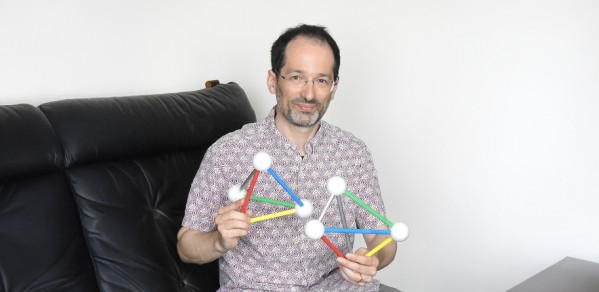
Professor Gábor Csányi has been elected as a Fellow of the Royal Society, the UK’s national academy of sciences and the oldest science academy in continuous existence.
I am honoured and humbled to have been invited to join the Royal Society. I would like to particularly acknowledge the huge amount of enthusiasm and hard work by many people over the years in my group and in my wider collaboration network which contributed to this recognition.
Gábor Csányi Professor of Molecular Modelling
“It is with great pleasure that I welcome the latest cohort of outstanding researchers into the Fellowship of the Royal Society,” said Sir Adrian Smith, President of the Royal Society. “Their achievements represent the very best of scientific endeavour, from basic discovery to research with real-world impact across health, technology and policy. From tackling global health challenges to reimagining what AI can do for humanity, their work is a testament to the power of curiosity-driven research and innovation.
“The strength of the Fellowship lies not only in individual excellence, but in the diversity of backgrounds, perspectives and experiences each new member brings. This cohort represents the truly global nature of modern science and the importance of collaboration in driving scientific breakthroughs.”
The Fellows and Foreign Members join the ranks of Stephen Hawking, Isaac Newton, Charles Darwin, Albert Einstein, Lise Meitner, Subrahmanyan Chandrasekhar and Dorothy Hodgkin.
Gábor Csányi is Professor of Molecular Modelling in the Department of Engineering, and a Fellow of Pembroke College. His work is in the field of computational chemistry, and is focused on developing algorithms to predict the properties of materials and molecules from first principles. He pioneered the application of machine learning to molecular modelling which lead to enormous gains in the efficiency of molecular dynamics simulation. He is also interested in statistical problems in molecular dynamics, e.g. in enhanced sampling algorithms that can be used to explore the global configuration space of materials and molecules.
He contributes to the running of the Lennard-Jones Centre, in Cambridge which brings together modellers who work on the atomic scale. The centre has a seminar series where the application of machine learning to physics, chemistry and materials science problems are discussed.
As well as actively publishing academically, Gábor is also the co-founder of several startups which work to translate the research into real-world impact. Dassault Systèmes distributes the machine learning force fields commercially, and Ångström AI, Inc. provides the pharmaceutical industry with computational services that replace some wet-lab tests using accurate and fast first principles based simulation.
Gábor says; "I am honoured and humbled to have been invited to join the Royal Society. I would like to particularly acknowledge the huge amount of enthusiasm and hard work by many people over the years in my group and in my wider collaboration network which contributed to this recognition. An individual is named and elevated, but the necessary impact on the wider field would not have come about without the group effort. Taking an even longer view, I am thinking about the time when I arrived in Cambridge in 1988 as a precocious and somewhat obnoxious teenager from Eastern Europe, and was welcomed and supported by so many individuals and institutions in the subsequent years and decades. In a world today in which populist politics is made by making people’s lives harder, especially those who for one reason or another decide to uproot and move, I am grateful to be able to call Cambridge and the United Kingdom my home.
"After obtaining a Batchelor degree in maths at St. John’s College in Cambridge and PhD from MIT, I returned to the Cavendish Laboratory as a postdoc. The Theory of Condensed Matter group was the real cradle in which I cut my teeth in science, under the guidance of Mike Payne, Peter Littlewood, Richard Needs, and also Alessandro De Vita, a frequent visitor. The collaborative atmosphere combined with a level of seriousness, the desire of aiming high, and taking the long term view shaped my culture of research. Then moving to the Department of Engineering as a lecturer, I found the environment under the leadership of Norman Fleck similarly open and welcoming in which a young academic could thrive, even an outsider. The intellectual stimulation by the likes of Vikram Deshpande and also Zoubin Ghahramani and Carl Rasmussen and many others had a huge influence on me."

